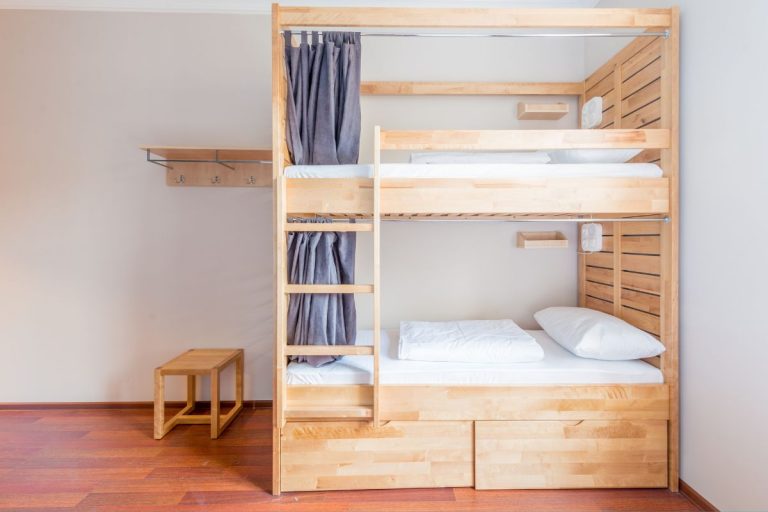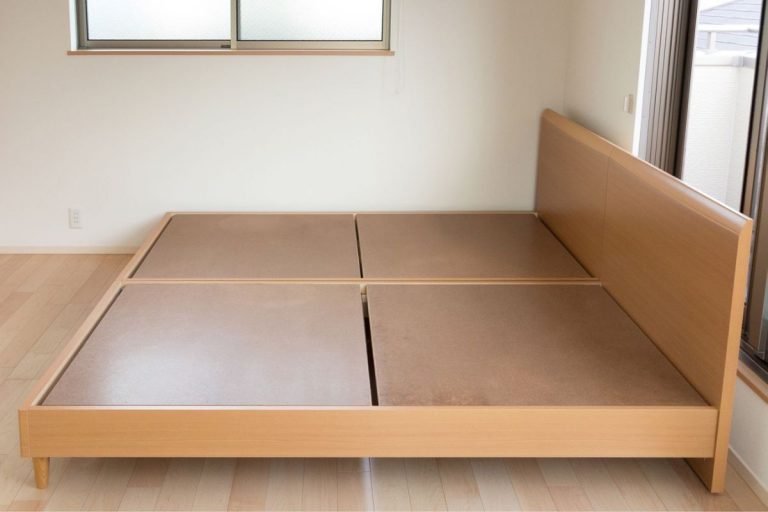I don’t know about you, but I love to sleep under a tree. There’s something calming and peaceful about it. The soft breeze blowing through the leaves, the rustling of branches as they move against one another—it all makes for a really great sleeping environment.
And let’s not forget: trees provide shade from the sun! It can blister hot during peak summer months, and having some respite from the heat is always welcome. But if you’re like me, you might have trouble finding time to get out there in nature on your lunch break at work or after dinner when it’s dark outside.
Sleeping under a tree is a concept foreign to most of us. But with a little imagination, you can create your own makeshift tree fort or canopy and have yourself a great place to lie down for some shuteye.
Sleeping under a tree is something everyone should try at least once in their life. It’s an experience I always look forward to when the weather gets warmer. There’s something so relaxing about it—the cool breeze, the chirping of birds…it makes for an excellent getaway from reality.
In this article, I’m going to make the case for sleeping under a tree. I will also tell you how to make it a comfortable experience you’ll want to repeat over and over.
Fun fact: Did you know that trees sleep at night? Trees drop their branches at night.
The Good and the Bad of Sleeping under a Tree
Much like everything in this world, there are advantages and disadvantages to sleeping under a tree. Since we are all different, it’s to you to analyze if sleeping under one could suit you.
In this section, we are going to see what makes sleeping under a tree good, and what are the potential drawbacks.
The Pros of Sleeping under a Tree
Sleeping under a tree is a lovely experience that comes with many advantages:
- There’s something so calming and peaceful about it. You can tune into nature and really feel you are one with the earth. Sleeping in a city reminds us of our everyday lives. The rush hours, the endless chores, the anxious people. Nature is the exact opposite. Every creature does what it has to do, without rush.
- The cool breeze and rustling of branches as they move against one another makes for a great sleeping environment. Add in the chirping of birds and all other natural sounds. They function as a natural lullaby.
- You’ll breathe better quality air all night long. Closed spaces like homes—especially if you live in a big city—can never offer as much quality air as outdoors. You’ll breathe in all the newly created oxygen by the trees.
- It makes for an excellent getaway from reality. Reality can be stressful. Sleeping under a tree will make us forget about what makes us stressful.
- Immersing ourselves in nature has proven health benefits. It’s the best stress relief. The body release endorphins, which are chemicals that make us feel good—the same as those released after a workout!
The Cons of Sleeping under a Tree
Sleeping under a tree isn’t the ultimate solution to all of your issues. Here’s why:
- It can be cold at night if you’re not prepared with extra layers or blankets. It can also be cold if there’s a lot of wind.
- It can get uncomfortable or moist with dew in the mornings, which then leads to more than just an irritating feeling on your skin. Therefore, you should always bring extra layers and not sleep directly on the grass. Sleeping under trees isn’t the best option for people with allergies either.
- It’s difficult to find a pleasant spot where you won’t feel any roots or branches poking into your back. Sleeping under trees takes patience and lots of trial-and-error before finding that perfect place. You might also not like sleeping in one location all the time.
- It’s an experience better for warm to hot weather. When there are low temperatures, it can be dangerous because you can catch a cold or worse.
Now that we’ve learned about all the pros and cons of sleeping under trees, let’s talk about how you can make your own makeshift tree fort or canopy, so this experience is comfortable and enjoyable.
Building Your Bed to Sleep under a Tree
Building a bed that will let you sleep comfortably at night isn’t easy. There’s a lot of trial and error, but it will be worth all the effort in the end:
The tree bed has to sit above ground—you don’t want any animals getting into your sleeping space! Use boards or branches for this purpose; they should at least be one foot high from the bottom of the trunk. If you’re using a tarp, make sure it’s over the bed.
The bed needs to be flat enough, so that nothing hurts your body while sleeping, but not too thin or hard either—otherwise it will feel the ground through the tarp if there’s no mattress on top.
You can also line the sides of your bed with pillows all around to help you sleep better. Plus, it makes for a great place to sit up and read before going off to dreamland.
Find a suitable spot: I prefer small trees because they’re easy to climb up. But, for this to work, you need a high branch so you can sleep on top of it with no problems.
I usually choose trees that are near water sources like lakes or rivers because I enjoy the sound of flowing water as I fall asleep at night (also helps drown out other noises). You don’t want to pick one that’s next to a busy road, because you’ll still be able to hear cars.
Choose your spot based on how much light can get through and where there aren’t any roots or branches right under it (you don’t want those poking into your back as you sleep).
Build a makeshift canopy or tree fort. This is the most challenging part, but you can use things around you in nature to create your own temporary ‘tree house.’ First off, find some rope and tie it securely from one side of the branch to another. Then suspend items underneath that will serve as your ‘floor’ to create a small canopy.
The thicker and harder branches you can find, the better for your back. You want those as support beams to keep your body from sinking too much into the ground while sleeping under a tree. Use these branch-pillars as guides so they are close enough that you don’t feel them when you sleep. You can then line your back with pillows on top of these branches for extra comfort and support.
For example, I hung my hammock from the rope and suspended it from either side of the branch using more sticks driven into the ground (or tying them securely with other items). You can use leaves or large pieces of fabric you find in nature; anything that will help block out light and protect you from the elements.
As for building your bed, I recommend using things that can easily be attached to each other like sticks and leaves (you can find these items in nature). Then tie them together with rope or vines so they don’t fall apart when you lie down on top of it! You want to make sure everything is as light as possible, so it’s easy to carry around.
Now that you know how to build your own makeshift canopy or tree fort, I highly recommend trying out this experience at least once in your life! It opens up the door for endless possibilities of places where you can sleep outside under a beautiful sky full of stars and more! When sleeping outside with nature, you can really connect with yourself and the world around you better than ever before!
Potential Dangers of Sleeping under a Tree
Sleeping under trees is a fantastic experience, but it’s not for everyone. If you have allergies to pollen or other plants and flowers in the air, this isn’t an ideal place to sleep outside at night! It can also be dangerous if there are low temperatures because you could catch a cold.
But the real dangers come from predators. Many species think of humans as nothing more than a luxury dinner. If you’re sleeping in the wild, they might appear and try to turn you into their next meal.
A typical example is bears. While bears rarely care about humans, especially if they are standing still, your presence might scare them in their area. And a frightened bear is not something you want to see in action.
But they are far from the only predator you might encounter. Any large animal in its natural habitat could be dangerous when it is hungry enough.
Another potentially dangerous species is snakes. Most snakes want nothing to do with humans, but they can still be quite dangerous. Snakes are cold-blooded and need the sun’s heat to warm up their bodies. When a snake is sleeping in your tree fort or canopy bed, you might not notice it until it bites you out of nowhere!
Depending on where exactly you decide to sleep outside, you might be surrounded by all kinds of different predators. In the wild, they are not afraid to attack humans since we have a tendency of running away from them instead of fighting back.
A way to prepare yourself for this eventuality is by carrying a knife with you. Knives are also useful when you are preparing your bed, and are a necessity when going outdoors.
While not necessarily dangerous, scorpions and bugs can also turn your sleeping experience into a nightmare. A scorpion or bug bite can cause serious pain and discomfort. If you encounter any, immediately seek medical attention to make sure that the venom isn’t fatal.
Luckily, there are sprays that keep bugs away. Something like this is more than enough to enjoy a refreshing night under a tree without feeling like you are being devoured by bugs.
And one last thing. Bird poop. This is by far the least of your concerns, but it’s not fun to wake up in the middle of the night because a bird pooped on you.
Always check your surroundings before settling down (especially if it’s during summer). Predators are everywhere—in trees, on the ground, all around you!
It is important to be aware of your surroundings at all times so you can take precautions.
The Myth of Night Photosynthesis
Photosynthesis is the process through which plants make their own food. But it’s what makes them so valuable to us.
During photosynthesis, plants absorb carbon dioxide (CO2) from the atmosphere, and release oxygen. This process keeps us alive and breathing. This is the reason trees are so effective at cleaning our air.
It’s estimated that each tree produces enough oxygen for about four people to breathe. By sleeping under a tree, you’re taking advantage of this process and breathing cleaner air all night! This also makes it easier for everyone around your area who will breathe in the same clean air
Plants absorb oxygen and release CO2 during the night. Without sunlight, plants have a breathing pattern that is exactly like ours.
You’ll find many articles online claiming that sleeping under a tree is dangerous because it’s going to asphyxiate you. It somewhat makes sense, right? If trees absorb oxygen and release CO2 during night, then they are supposedly stealing your oxygen.
But in reality, it’s utter nonsense.
How many people sleep outdoors every day? How many animals live under trees and sleep there at night? Yet we’re not dead because trees are stealing our oxygen, and plants need CO² to grow.
The Theory of Night Photosynthesis is simply a myth that needs busting! (And it’s also an excellent example of how things can get out of hand when there’s no one around to step in and keep people informed.)
So, sleep under a tree and enjoy the experience all you want. It’s not dangerous at all. Unless the environment itself is. For example, sleeping under a tree during a thunderstorm is dangerous.
Trees attract lightning, because lightning likes tall objects and you don’t want to be under the tallest thing around, or the tallest thing itself. If a lightning strikes your tree, it’s going to catch fire or fall down. You don’t want to be there when it happens.
And while that might not happen every day, it’s important to check your surroundings before settling down at night. Predators are everywhere—in trees, on the ground, all around you! Always take precautions when sleeping outside, since there is no one else out there watching over you but yourself.
But as long as you’re in the right environment, there’s absolutely no reason sleep deprived people can’t take advantage of nature’s gift every day.
Conclusions
Trees have been there since the beginning of time and have always been a source of life for humans.
They’re the perfect place to sleep because they produce oxygen, which is cleaner than what we breathe in during the day. It’s also important to be aware of your surroundings when you sleep under a tree by checking for any predators like bugs or plants that might cause discomfort or pain.
Sleeping under a tree takes some preparation, especially if you want to do it for a full night. If you just want to relax for a couple of hours under a tree on a blazing hot summer day, then you don’t really need to do anything special. Lie down, close your eyes, and tune into the environment.
Sleeping under a tree is safe—provided you take the precautions—and a refreshing experience. Don’t listen to the plethora of articles online claiming it is dangerous and that you are going to choke on your sleep. That’s false. Yes, it’s true that trees produce CO2 and consume oxygen during the night, but the amount of CO2 they produce is infinitesimal compared to humans.
Also Read:





